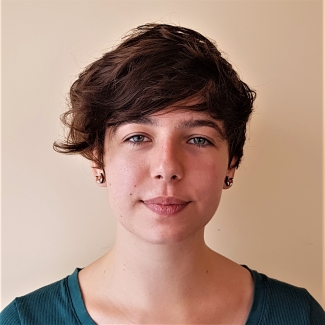Lis
Joanna's journey to Kaufman's group took her through many countries and research disciplines. Joanna completed her undergraduate studies at University College London, UK. There her first research experience was with the biophysics group where, with Atomic Force Microscopy, she investigated DNA strands equilibration in 2D. With Professor Gaetana Laricchia Joanna completed her Master’s thesis on "Positronium production and scattering". She analysed the energy and angular dependence of the formation of this particle in neon gas, culminating in a proposal for increasing the efficiency of positronium production. At Okinawa, Japan she worked on whispering-gallery-mode resonators, where the motivation was to use their mechanical vibrations as nanoparticle sensors. Inspired by the potential of AMO table top-based experiments, Joanna joined the Ultracold Fermi Gas Group at Laboratoire Kastler Brossel, Paris, France. There she designed and constructed an objective to image lithium atoms and helped to engineeran all-optical homogeneous trap for these atoms. In Kaufman's group,Joanna will build a new tweezer experiment, this time with Yb Rydberg atoms, that aims to exploit the many-body interactions for quantum computation and simulation purposes.



 The Physics Frontiers Centers (PFC) program supports university-based centers and institutes where the collective efforts of a larger group of individuals can enable transformational advances in the most promising research areas. The program is designed to foster major breakthroughs at the intellectual frontiers of physics by providing needed resources such as combinations of talents, skills, disciplines, and/or specialized infrastructure, not usually available to individual investigators or small groups, in an environment in which the collective efforts of the larger group can be shown to be seminal to promoting significant progress in the science and the education of students. PFCs also include creative, substantive activities aimed at enhancing education, broadening participation of traditionally underrepresented groups, and outreach to the scientific community and general public.
The Physics Frontiers Centers (PFC) program supports university-based centers and institutes where the collective efforts of a larger group of individuals can enable transformational advances in the most promising research areas. The program is designed to foster major breakthroughs at the intellectual frontiers of physics by providing needed resources such as combinations of talents, skills, disciplines, and/or specialized infrastructure, not usually available to individual investigators or small groups, in an environment in which the collective efforts of the larger group can be shown to be seminal to promoting significant progress in the science and the education of students. PFCs also include creative, substantive activities aimed at enhancing education, broadening participation of traditionally underrepresented groups, and outreach to the scientific community and general public.